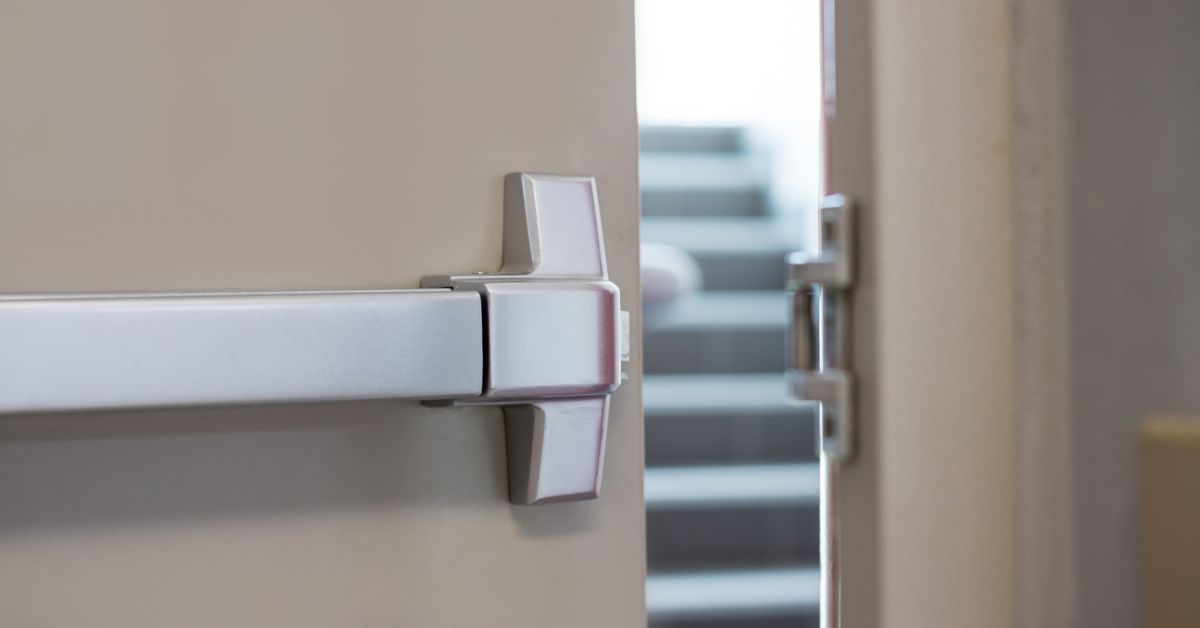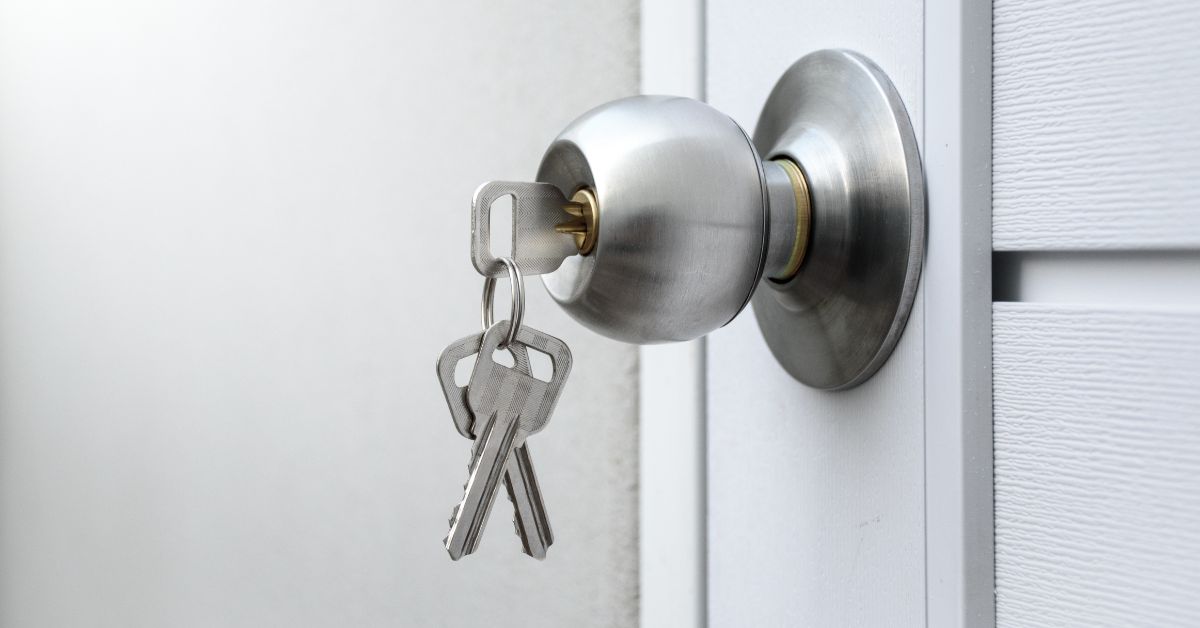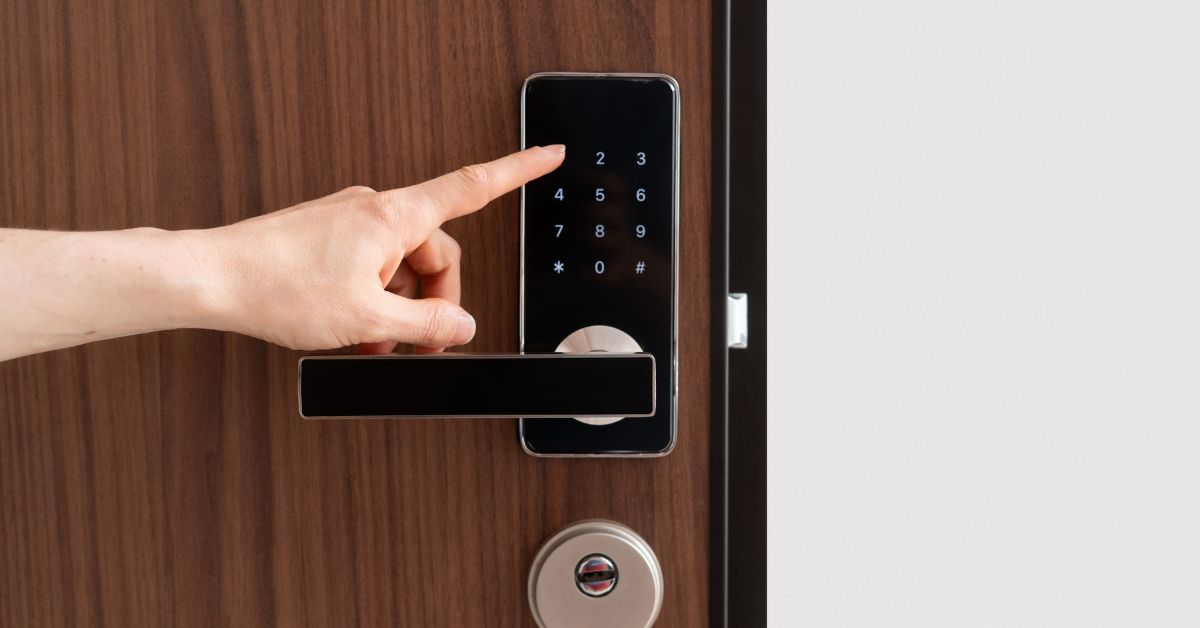The Most Common Types of Commercial Door Locks

Choosing the right door lock for your property can improve the security and convenience of your business operations. With so many options available, understanding lock variations and their features is essential for making a good decision. Let’s explore the most common types of commercial door locks, including their functionalities, pros and cons, and best use cases.
Keyed Entry Door Locks
Keyed entry door locks are one of the most traditional options for securing commercial spaces. These locks operate with a key from the outside and a knob or lever from the inside. And they typically come with a deadbolt for added security. Their straightforward design makes them easy to install and use, making them a popular choice for many businesses.
The primary advantage of keyed entry door locks is their cost-effectiveness and widespread availability. They are simple to install and replace, which is beneficial for businesses looking for quick and budget-friendly security solutions.
However, these locks are susceptible to picking and bumping. Furthermore, some people may lose their physical keys or duplicate them, posing potential security risks. Keyed entry door locks are ideal for internal office doors, small retail spaces, and areas requiring low to moderate security.
Deadbolt Locks
Deadbolt locks are a step up in security from standard keyed entry locks. These commercial door locks offer enhanced resistance to forced entry, making them ideal for safeguarding external doors and high-security areas. Deadbolts function by extending a solid metal bolt into the door frame, providing a robust barrier against intruders.
Types of Deadbolt Door Locks
There are different deadbolt door locks to consider adding to commercial spaces. Here are popular options:
- Single-cylinder deadbolts: These deadbolts feature a key mechanism on the exterior side. They include a thumb turn on the interior, allowing easy access.
- Double-cylinder deadbolts: These require a key to operate from both the inside and outside. They provide heightened security but pose a fire hazard if a key isn’t readily available.
- Lockable thumb-turn deadbolts: A combination of single- and double-cylinder features allows the thumb turn to be locked or unlocked with a key.

Electronic Keypad Locks
Electronic keypad locks are popular thanks to their convenience and advanced security features. These locks provide keyless entry through a numeric code, eliminating the need for physical keys. Users can easily assign and change codes, making them ideal for environments with frequent personnel changes.
One of the best things about electronic keypad locks is their customizable access control. Business owners can quickly update or revoke access without the hassle of collecting keys. Additionally, these locks offer good security, as they resist picking and bumping.
However, they are more expensive than traditional locks and require a power source (either through batteries or a wired connection). Electronic keypad locks best suit office buildings, retail stores, and facilities with rotating staff.
Smart Locks
Smart locks represent the pinnacle of modern security technology, offering a range of advanced features. Users can control these locks remotely via a smartphone, providing unparalleled convenience and flexibility. Integration with smart business systems allows users to monitor and manage access from anywhere, as well as receive notifications and access logs in real time.
The main benefits of smart locks include convenience, enhanced security features, and remote management capabilities. You can integrate these locks with other smart devices, creating a cohesive security ecosystem.
Please keep in mind that smart locks rely on internet connectivity and may become vulnerable to hacking if you don’t properly secure them. Typically, smart locks suit modern office spaces, tech companies, and co-working environments where advanced security and convenience are paramount.
Magnetic Locks (Maglocks)
Magnetic locks, or maglocks, use electromagnetic force to secure doors, offering a high level of security. These locks have access control systems, enabling easy integration with various security protocols. The electromagnetic force provides a strong holding mechanism, while the lack of moving parts ensures durability and reliability.
Maglocks offer strong holding force and quick release in emergencies, making them suitable for high-security entrances and sensitive areas. However, they require continuous power to remain locked and can be expensive to install and maintain. Despite these drawbacks, maglocks serve as an excellent choice for high-security entrances, emergency exits, and areas like data centers.
Mortise Locks
Mortise locks are a common type of commercial door lock known for their durability and versatility. Installers place these locks within a pocket or mortise cut into the door, providing a secure and tamper-resistant locking mechanism. Mortise locks come with various functions, including deadbolt and latch mechanisms, offering comprehensive security.
The primary advantages of mortise locks include high security and long-lasting performance. Their complex installation and robust design make them difficult to tamper with. But this complexity also results in higher installation costs and potential challenges in retrofitting existing doors. Mortise locks suit older buildings, upscale commercial properties, and locations where both aesthetics and security are top priorities.

Exit Devices
Exit devices, also known as Panic bars and Crash bars, ensure safety during emergencies by allowing quick and easy exit with a simple push of a bar. These devices are vital for compliance with building safety codes and go on exit doors in public buildings, schools, and hospitals.
The main benefit of panic bars is their ability to facilitate rapid egress, preventing bottlenecks and stampedes during emergencies. They offer user-friendly operation and can integrate with alarm systems for added security.
However, panic bars may be less secure against unauthorized entry if you don’t properly manage them. Despite this, they remain indispensable for schools, hospitals, public buildings, and emergency exits.
Biometric Locks
Biometric locks represent cutting-edge technology in the field of security, using unique physical characteristics for access control. These locks can utilize fingerprint, retina, or facial recognition to grant entry, eliminating the need for keys or codes. Biometric locks offer a high level of security, as the access credentials are nearly impossible to duplicate.
People prefer biometric locks for their extreme security and convenience. They provide quick and reliable access, making them suitable for high-security areas. However, they are expensive and may raise privacy concerns.
Additionally, there is a possibility of false rejections, requiring backup access methods. Biometric locks are ideal in high-security areas, tech companies, and sensitive data centers where maximum security is essential.
Final Thoughts
You can choose the best commercial door lock to protect your business by understanding the different kinds and their features. Remember that each lock has unique advantages and potential drawbacks, making it important to choose the right one for your specific security needs. Implementing the appropriate locking mechanisms can significantly enhance your property’s security, ensuring the safety of your assets and personnel.

Author
Michael Rega
Chief Marketing Officer and founding Member of DoorHub.com